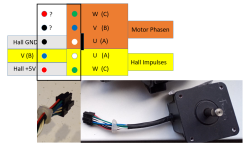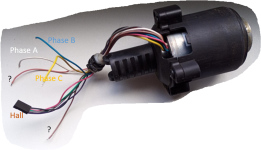ullisun58
Well-known member
Hello all,
today i fineshed my research of decoding the Hall Impulses of a brushless Motor with the Raspberry Pi. The challange was that all Hall Tics where counted with a freuquenz of 850Hz per Motor. I found the pigpio library wich is able to run as domain in the background an checks the GPIOs frequently. Now I will solder this on an pcb board and build it in a old Robolino Mower. If its wanted i can post the code. Attached you will find a short video, sorry the voice is in german language
View attachment brushless-2023-10-27_H9iHSAvt.mp4
today i fineshed my research of decoding the Hall Impulses of a brushless Motor with the Raspberry Pi. The challange was that all Hall Tics where counted with a freuquenz of 850Hz per Motor. I found the pigpio library wich is able to run as domain in the background an checks the GPIOs frequently. Now I will solder this on an pcb board and build it in a old Robolino Mower. If its wanted i can post the code. Attached you will find a short video, sorry the voice is in german language
View attachment brushless-2023-10-27_H9iHSAvt.mp4



